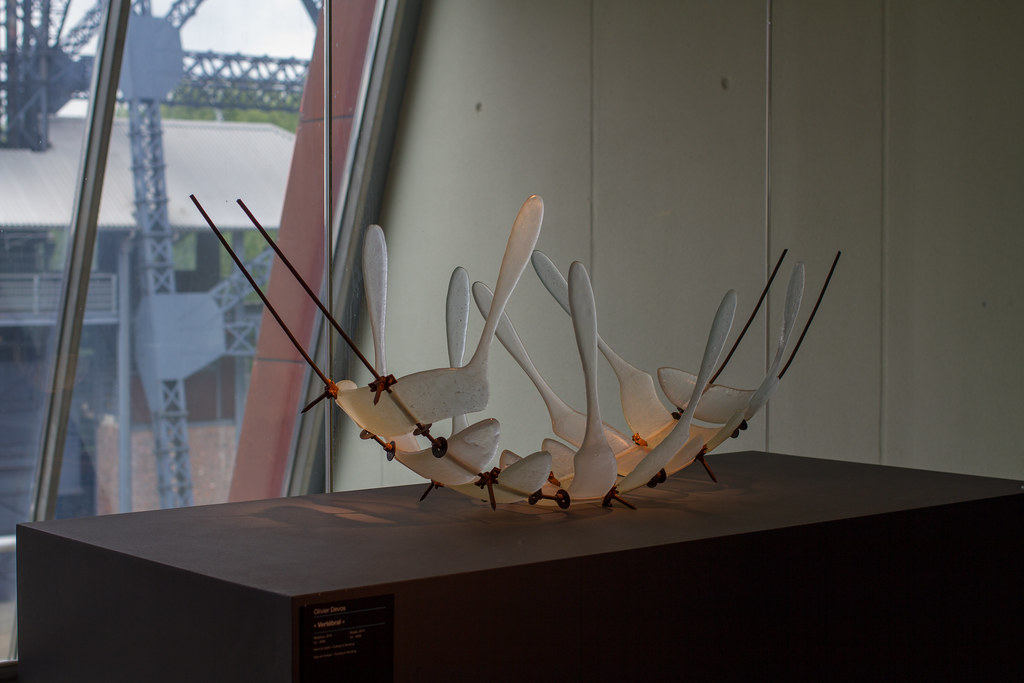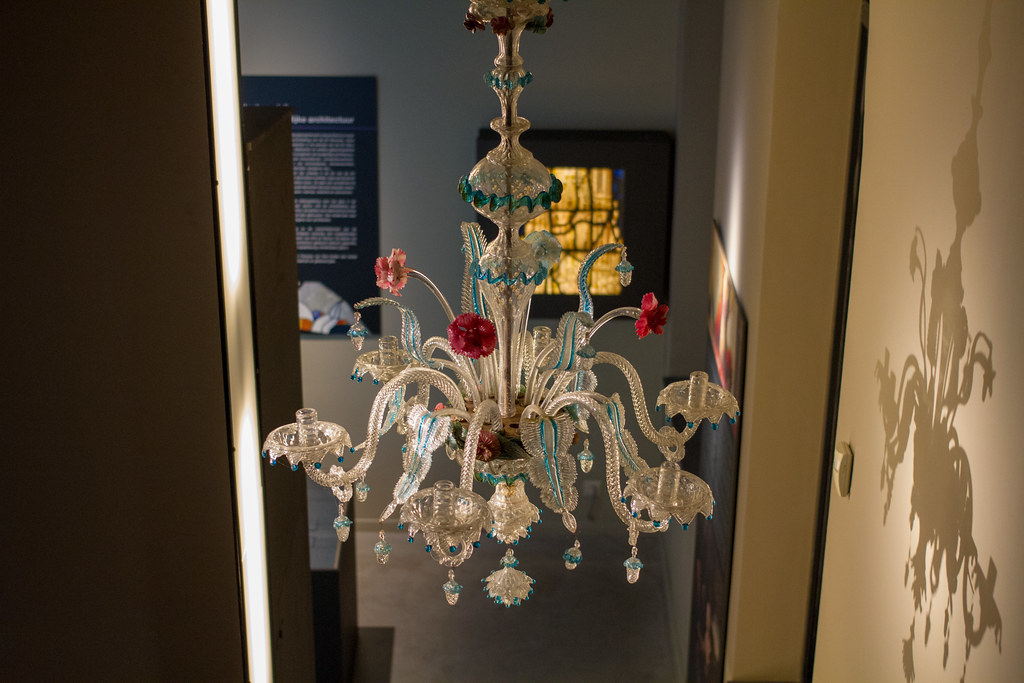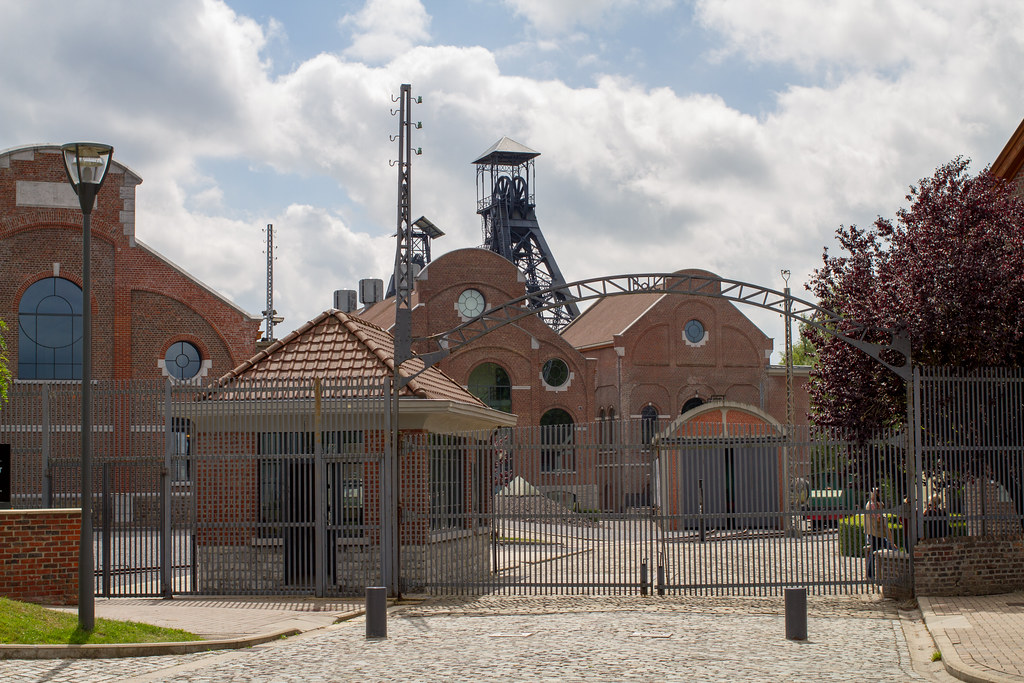
Date and Time of Visit: July 16, 2017, approximately 3:00 p.m.
This past March, I finally finished writing my series on the most beautiful villages in Wallonia, which I visited six months ago in July 2017, and the places I visited on that trip were not only beautiful villages, but also some of Belgium’s World Heritage Sites. We visited three World Heritage sites on this trip.
Go to a World Heritage Site that is not medieval European
When it comes to the World Heritage sites in Belgium, most people think of the beautiful medieval streets such as the Grand Place in Brussels and the Old Town in Bruges, but this time I visited two sites where modern and contemporary facilities have been turned into World Heritage sites, which is a complete change from such atmosphere.
- 03.トゥルネーのノートルダム大聖堂 -(2000年)
- 04.Major mining sites in the Walloon region -(2012年)
- 05.ラ・ルヴィエールとル・ルーにあるサントル運河の4つのリフトとその周辺 (エノー州) (1998年)
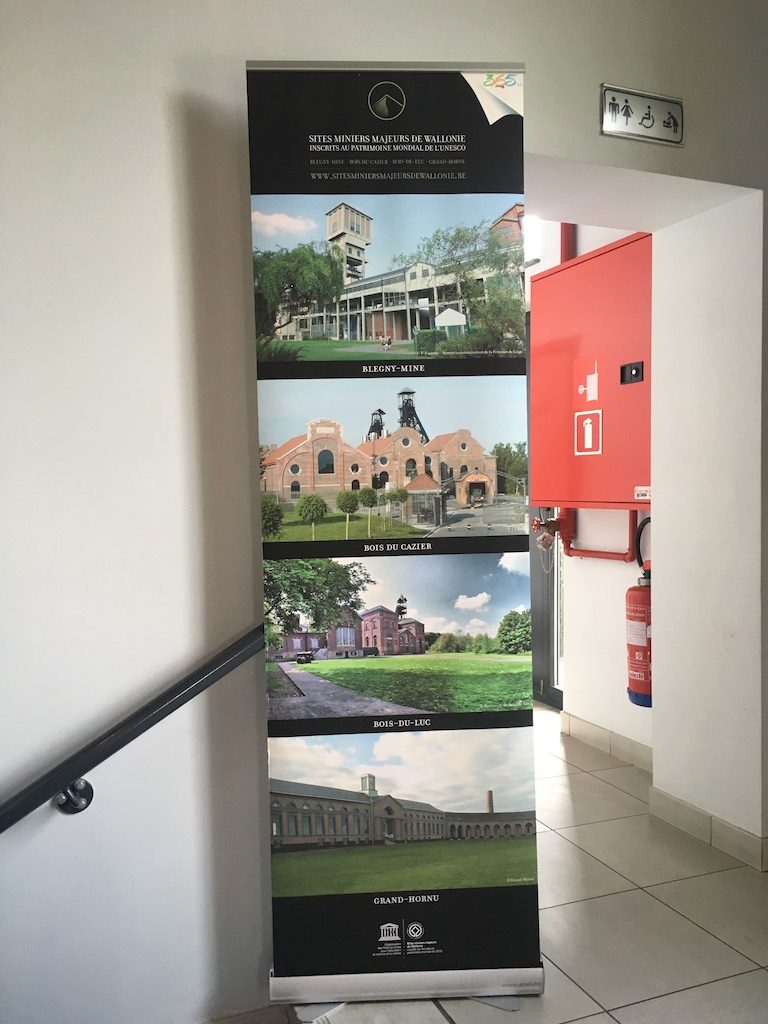
The main part of the tour was a visit to the most beautiful village of Walloon, but this region of Walloon actually attracted a lot of attention in European society after the Industrial Revolution. This is because there was a lot of iron ore and coal in this area. In fact, in the modern era, Belgium was the most prosperous country in Europe in the steel industry. Although it has recently been overtaken by China and India, Belgium and its neighbor Luxembourg were also once developed in the steel industry.
Major mining sites in the Walloon region
The Walloon region is dotted with iron ore mines and iron ore related factories that once flourished, and these factories form a World Heritage Site. We visited one of them in Le bois du Cazier (Cazier Forest). This site was registered as a UNESCO World Heritage Site in 2012 as a « major mining site in the Walloon region ».
Major mining sites in the Walloon region:https://ja.wikipedia.org/wiki/Major mining sites in the Walloon region
The following four four mining facilities are registered.
- グラン・オルニュ (Grand Hornu)
- ボワ=デュ=リュック (Bois-du-Luc)
- ボワ・デュ・カジエ (Bois du Cazier)
- ブレニー=ミーヌ (Blegny-Mine)
Both of them have stopped operation now, but they are museums with the facilities of those days left as they are. From the photos, it seems that all of them are splendid museums. Among them, we chose « Le bois du Cazier (Cazier Forest) » because it was easy to get there by the route.
How popular and well known is it? There are more tourists than I expected!
Go west from the highway junction on the south side of Charleroi, and you will arrive at the site about 5 km from the junction. I think there was a signboard to guide you to the facility, but it was not easy to find, so it is better to have a navigation system such as Google Maps.
It was just before 3:00 pm when we arrived at Kaziye. The facility had a nice parking lot for visitors, but when we arrived there, not a single car was parked. The building at the entrance of the site was very nice and clean, and there were many tourists when we went inside. There was a street parking space right next to the facility, so everyone might have parked there.
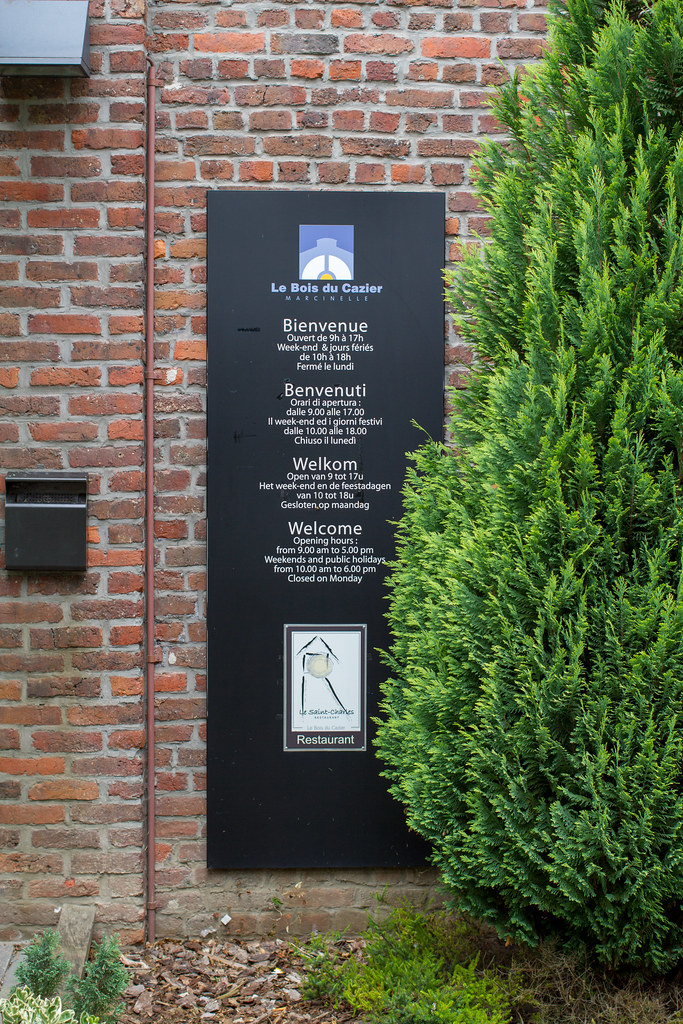
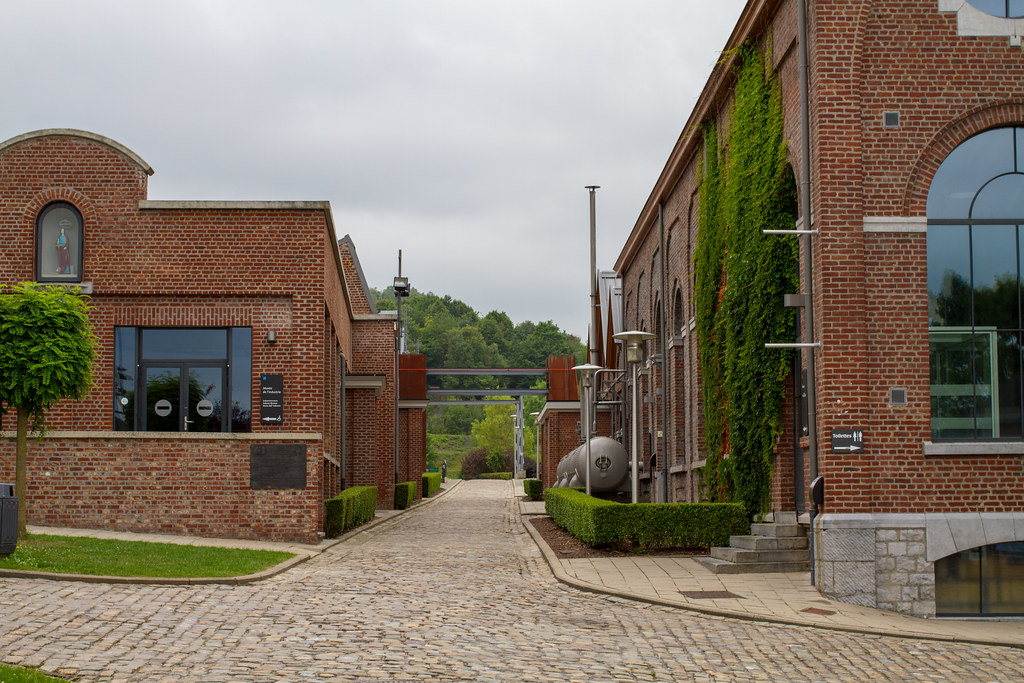
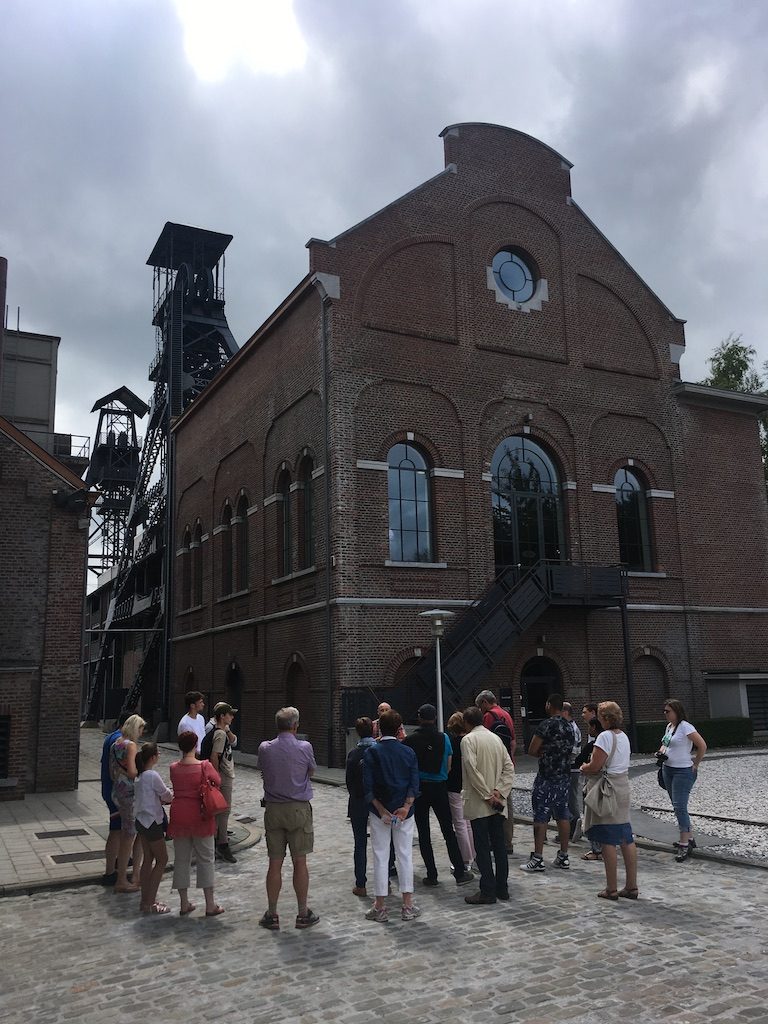
Now, this museum of Kaziye is basically free to visit with an entrance fee. You can also borrow an audio guide for free. The guide will explain the museum in English, French and Dutch. You can also apply for guided tours on site. We chose the free course with audio guide.
As you can see from the official website, the facilities and museum are very impressive.
公式ウェブサイト:http://www.leboisducazier.be
By the way, it looks like a total of 60,000 people visited in 2017. Is this a lot or a little lol?
For some reason, the bride and groom took a photo
I’m not sure how well known it is, but when I visited, a bride and groom were having their photo taken here.
\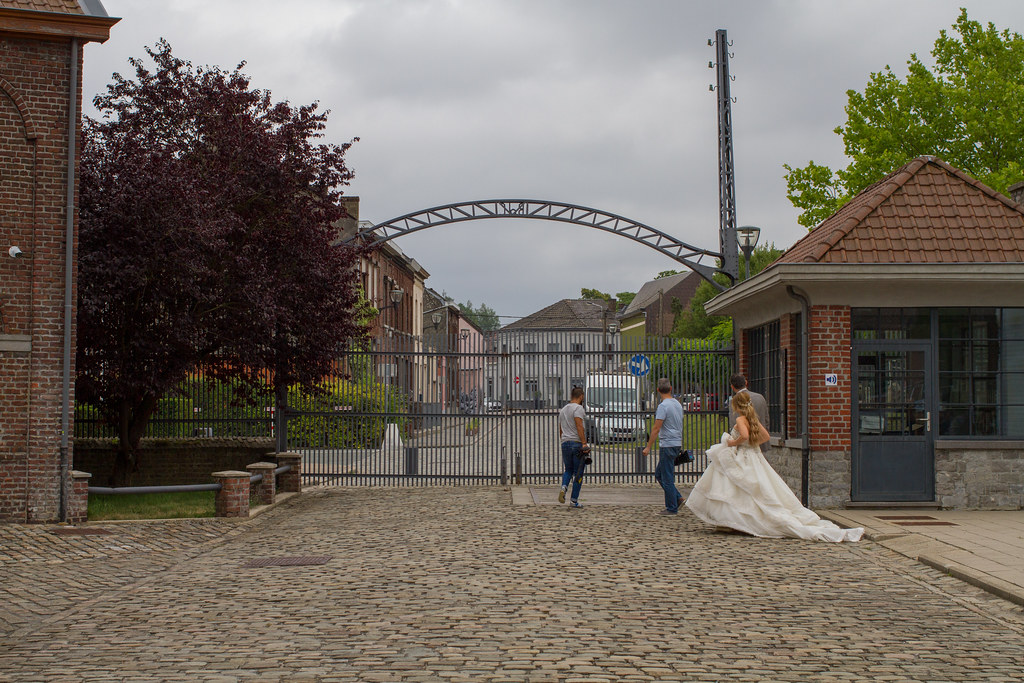
It’s certainly a World Heritage Site, but it’s still a mine site, so it’s a novelty. I was a little surprised, though I think it is certainly a nice facility and a place that looks good enough for a photo shoot.
But I was impressed that both of them looked so happy. I wonder if they had any memorable places.
History of the bois du Cazier World heritage of facilities since the Industrial Revolution, and why it is a World Heritage Site
The Walloon region, with its good supply of iron ore and coal, and in particular Charleroi, has played an important role in the economic life of Belgium since the Industrial Revolution. bois du Cazier and the other four sites on the World Heritage List are the very heart of modern Belgian heavy industry. The bois du Cazier and the other four sites on the World Heritage List are the very heart of modern Belgian heavy industry.
The mine is believed to have started as a coal mine in 1822. The mine was closed in December 1967.
Today, all of these facilities have fulfilled their roles over the years and have been transformed into the museums that we see today, serving the purpose of conveying the technological, social and economic history of the time to a large number of tourists.
industrial museum
Below is a brochure with a map of the facilities you can get at the site.
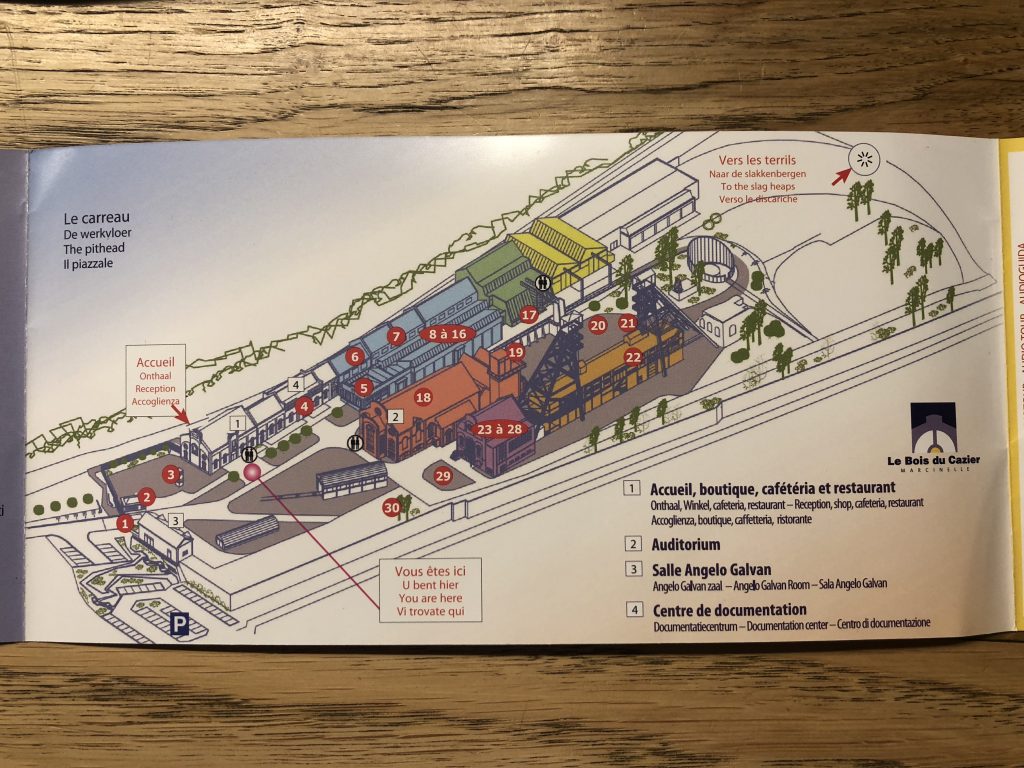
The photo brochure shows French, Dutch, English, and Italian, I think. That’s Belgium, where multiple languages are official languages. This area is in the south of Belgium, so it is French-speaking.
First of all, general visitors must go to the reception desk at the white square number 1 before entering the facility. After passing through the reception, you will find the place marked « Vous êtes ici (You are here) » on the right side of the map. We decided to go in order of the numbers (circled in red), number 1 being the main gate. The top image is a shot of the main gate from the outside (again).

The next stop was Le Musée de l’industrie, which is the blue building on the brochure map.
The history of the invention of the steam engine was explained here. This technology was invented and developed in England and spread throughout Europe.

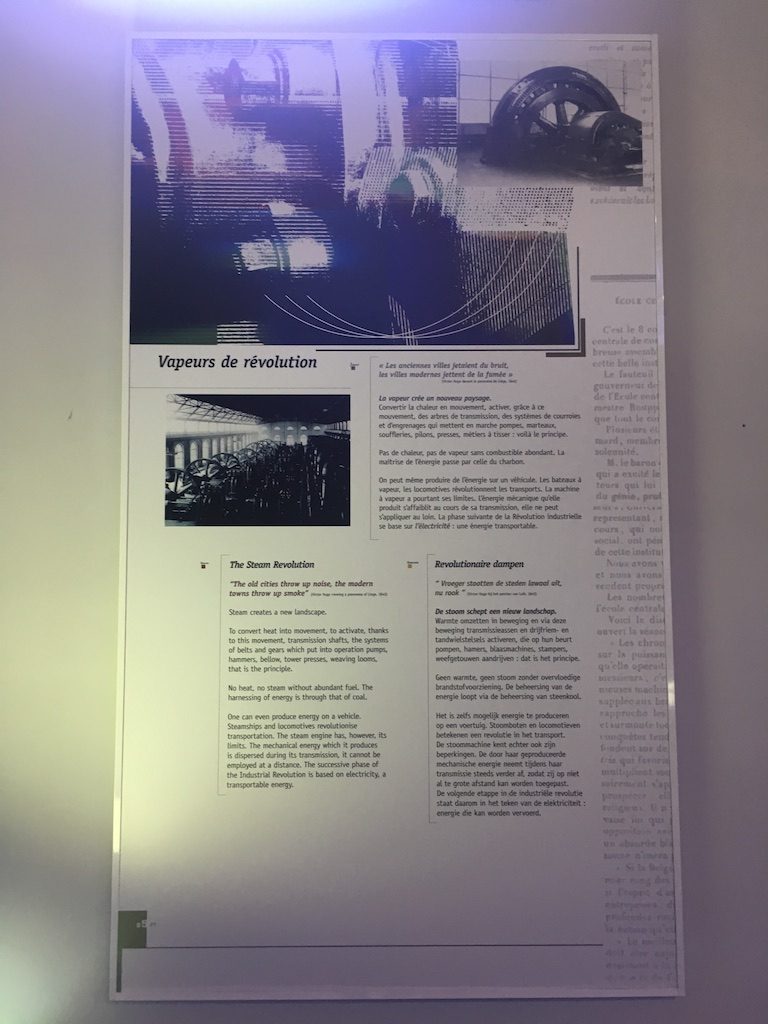
Gradually, as technology advanced, the machines became larger. Iron was needed to make these machines. And coal was essential for running steam engines. It is no wonder that the Walloon region, where these ores could be extracted, became the center of the Belgian economy after the Industrial Revolution.
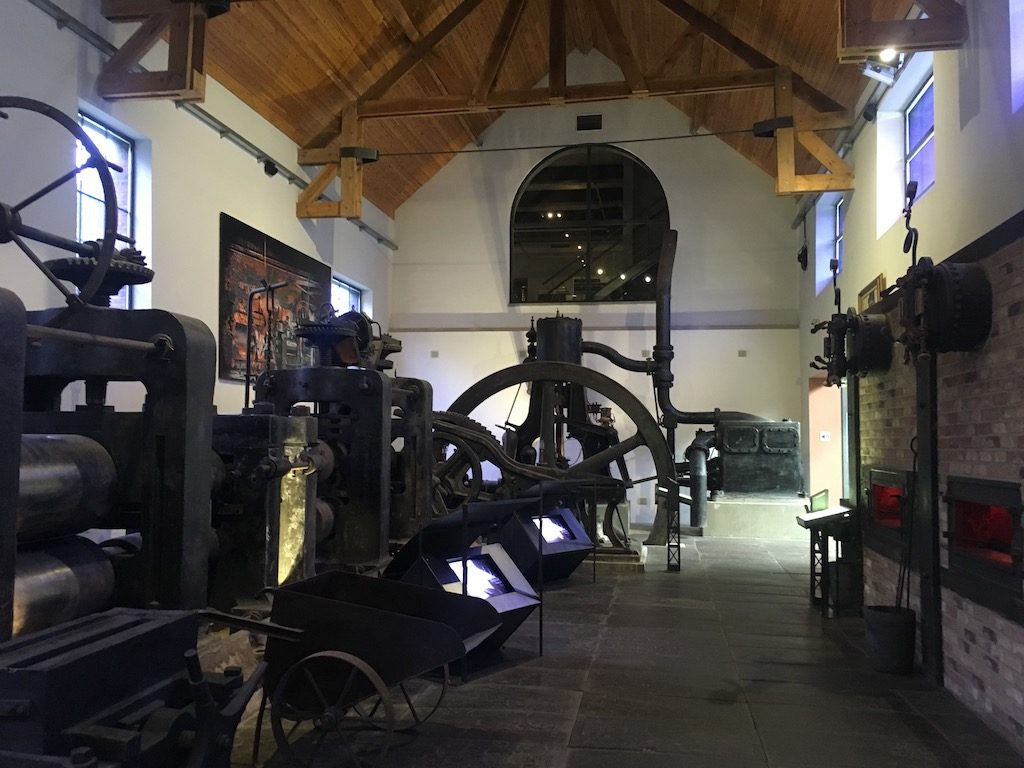
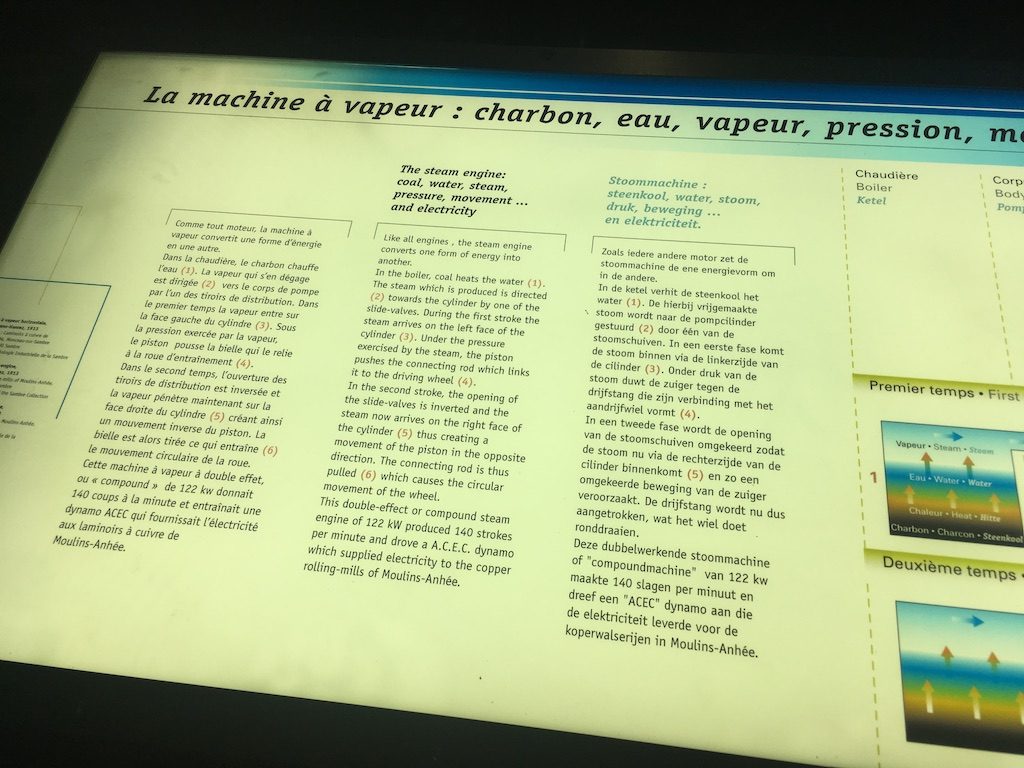
Belgium is a very small country in terms of land area, and it has an image of being at the mercy of the surrounding powerful countries such as Spain and France, and the northern part of Belgium belonged to the Holy Roman Empire. I have long wondered why it developed as a European power, despite the fact that it was influenced by many nations, such as the Holy Roman Empire.
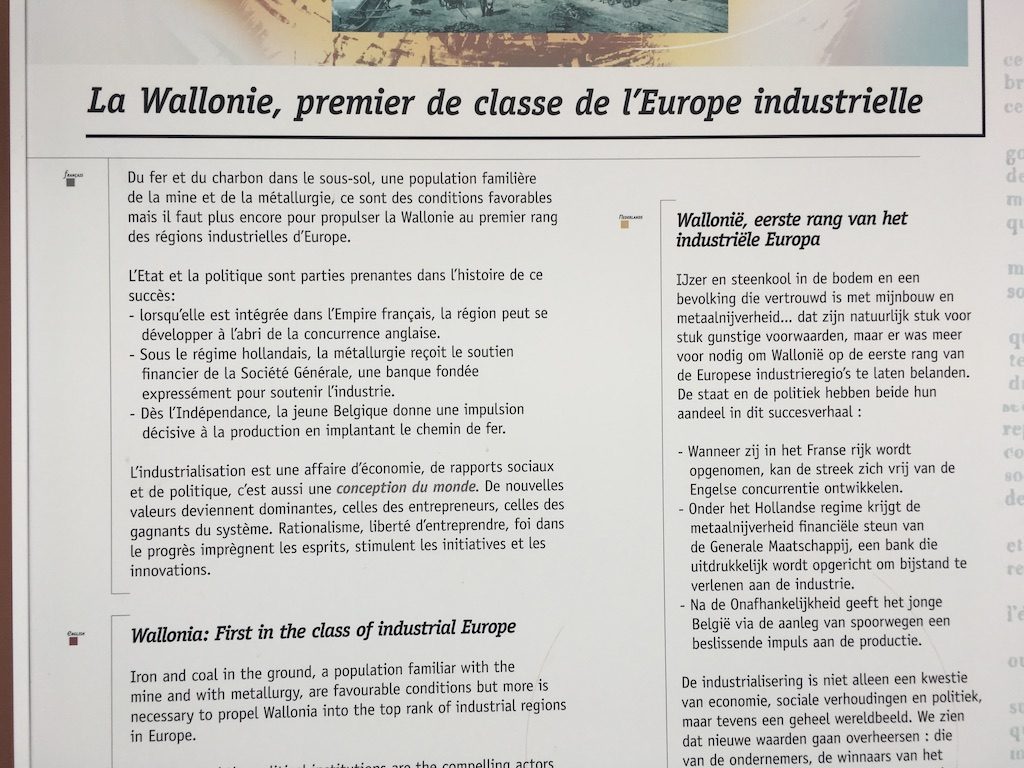
Working Environment
As for working conditions in the mines of the Walloon region.
It seems that the world was a little different from the « ideal capitalist » world described in Karl Marx’s book of 1886. It seems that women and children workers were exploited and forced to work hard 12-hour days. There were apparently no social rights or freedoms.
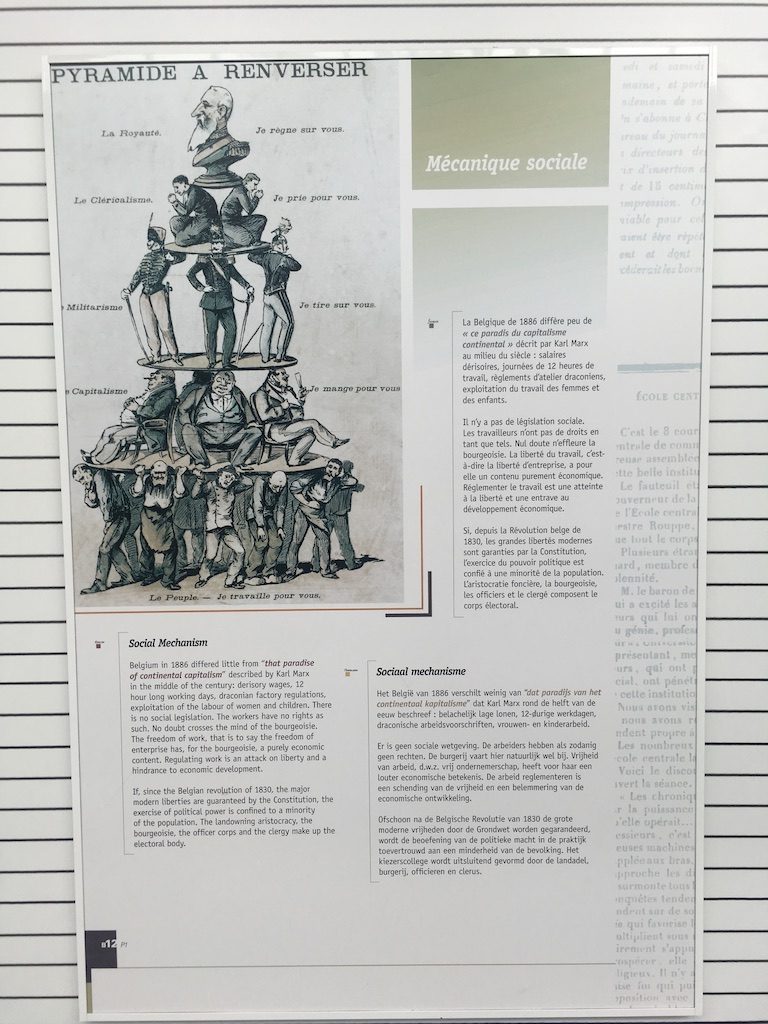
It can be said that the situation was exactly like the caricature in this exhibition panel.
Glass Museum
After visiting the Museum of Industry, the next stop was the Glass Museum.
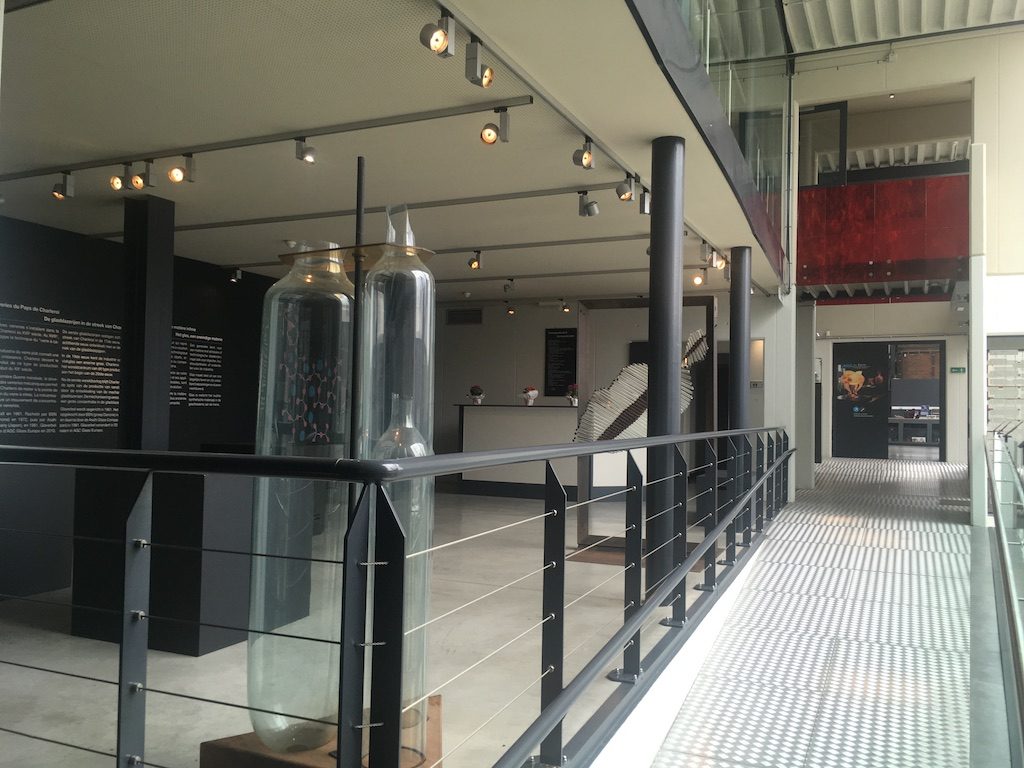
The glass industry is another industry that has developed significantly since the Industrial Revolution.
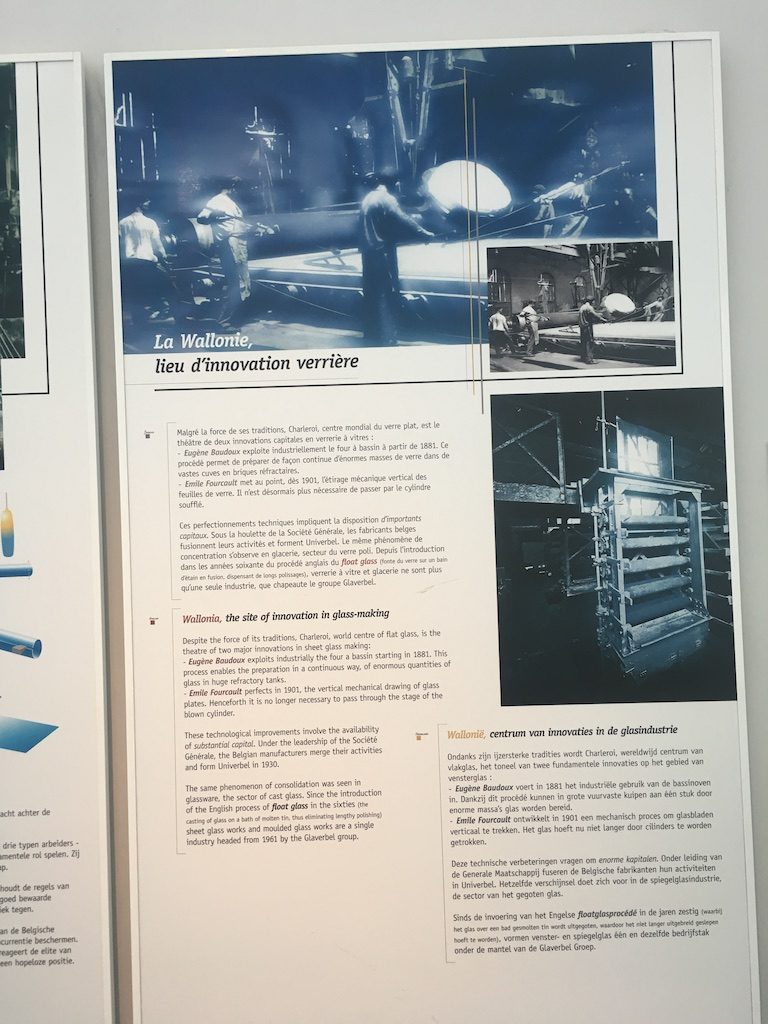
Charleroi, a large town near Cazier, is said to have been the first town to develop glassmaking. It is said that glassmaking started in Charlesroi in the 17th century, and in the 18th century, a new technique (verre à canons) was invented, according to the panel, but I couldn’t find it on Google.
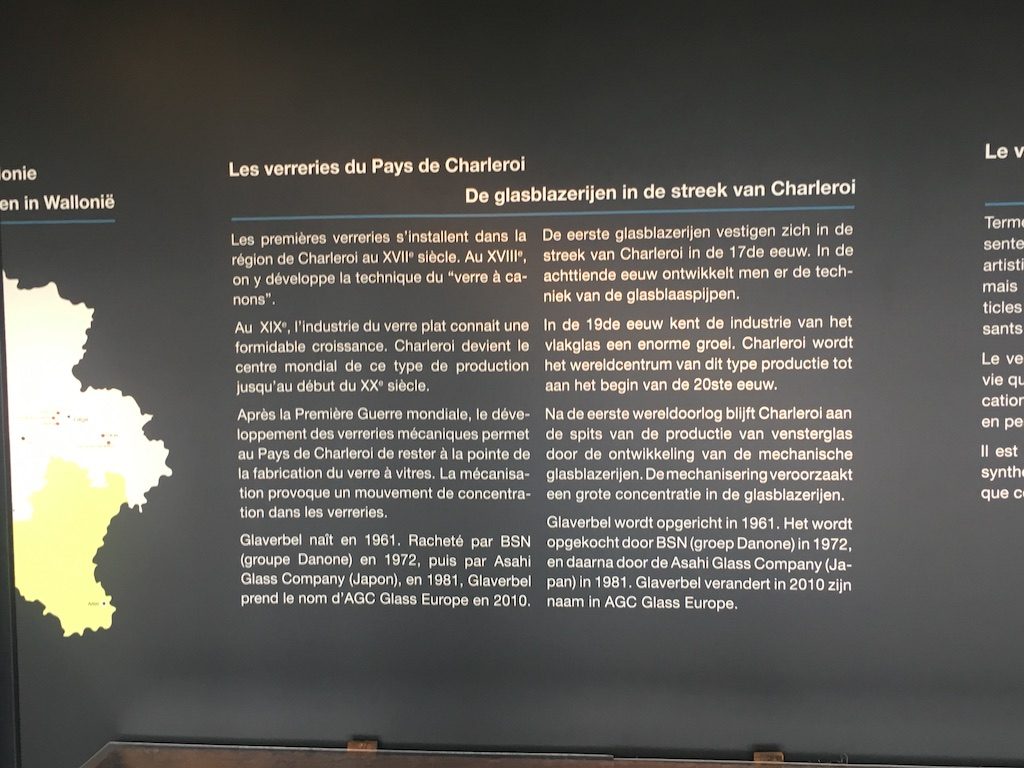
The 19th century was marked by a remarkable growth in the glass industry, and by the beginning of the 20th century Charleroi was the world’s glassmaking capital. By the beginning of the 20th century, Charleroi was the world’s centre of glassmaking, and after the First World War, further advances in the mechanisation of glassmaking brought Charleroi’s glassmaking to its peak. The global trend towards opportunity also had a major impact on the glass industry.
In the current Belgian glass industry, Glaverbel was born in Charleroi, but Asahi Glass of Japan acquired it in 1981. It seems that the company is now called AGC Glass Europe.
The museum not only explained the history of glass, but also exhibited glass works from the Art Nouveau period. It was just like a museum.
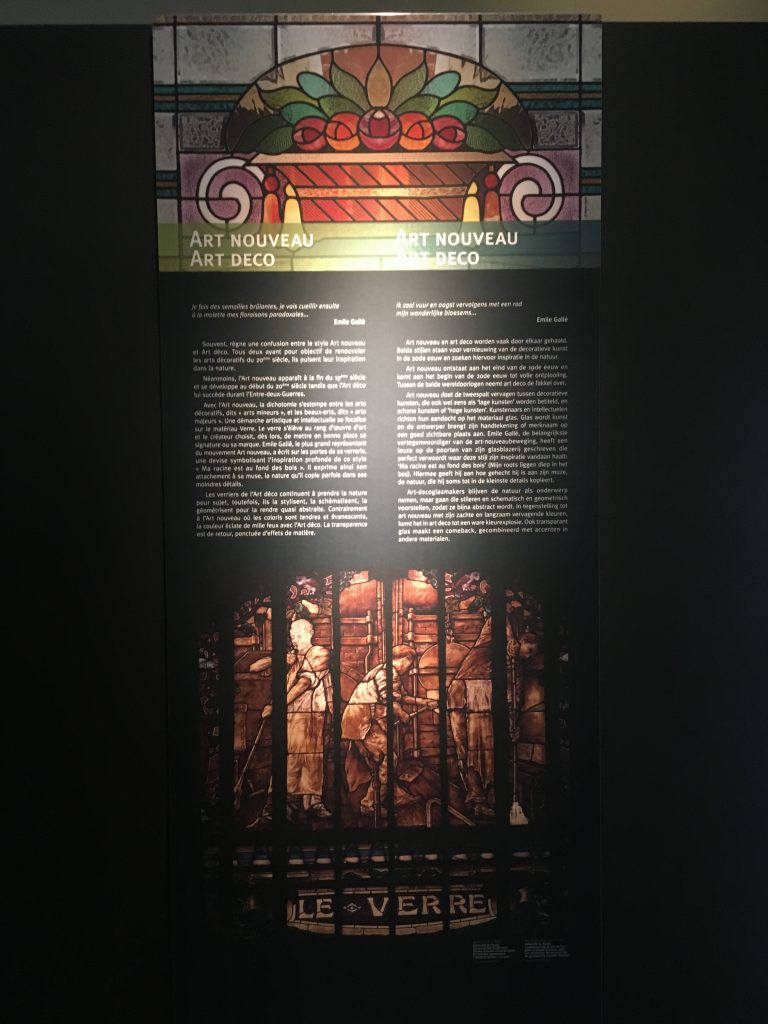
In French, the word « Musée » refers to both museums and galleries.
The catastrophe of August 8, 1956.
After we finished viewing the Industrial Museum and the Glass Museum, we headed out. In front of the exit of the Glass Museum, there was a building of the elevator facility which was the most eye-catching in this facility. You can take the stairs to see inside the building.
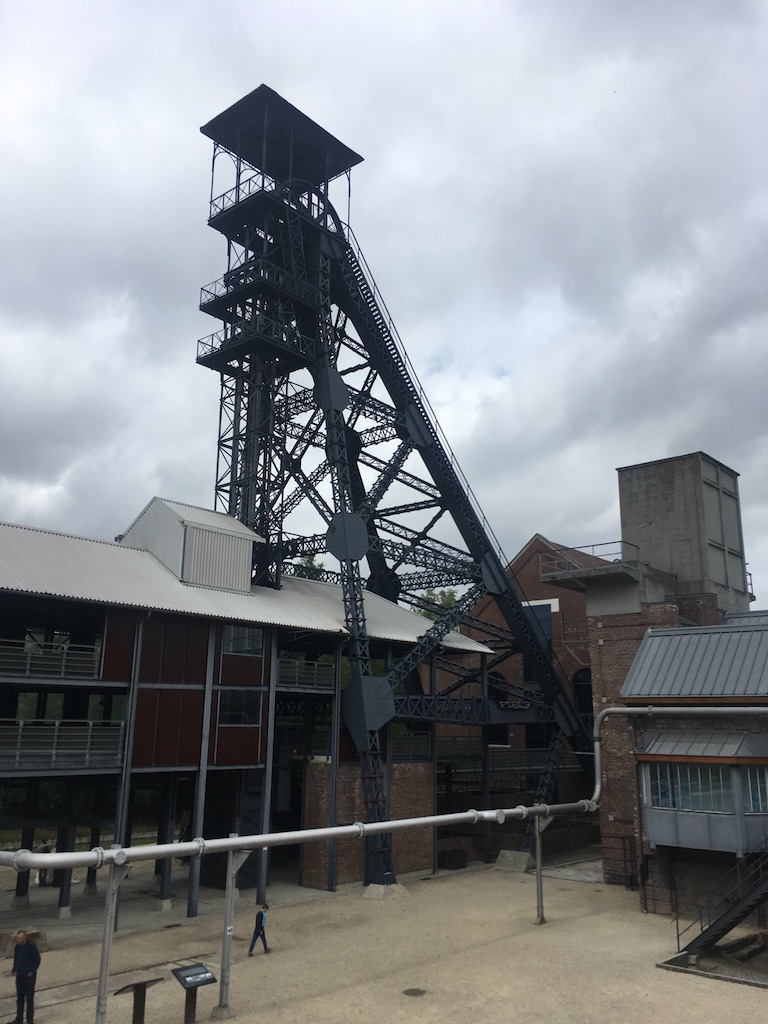
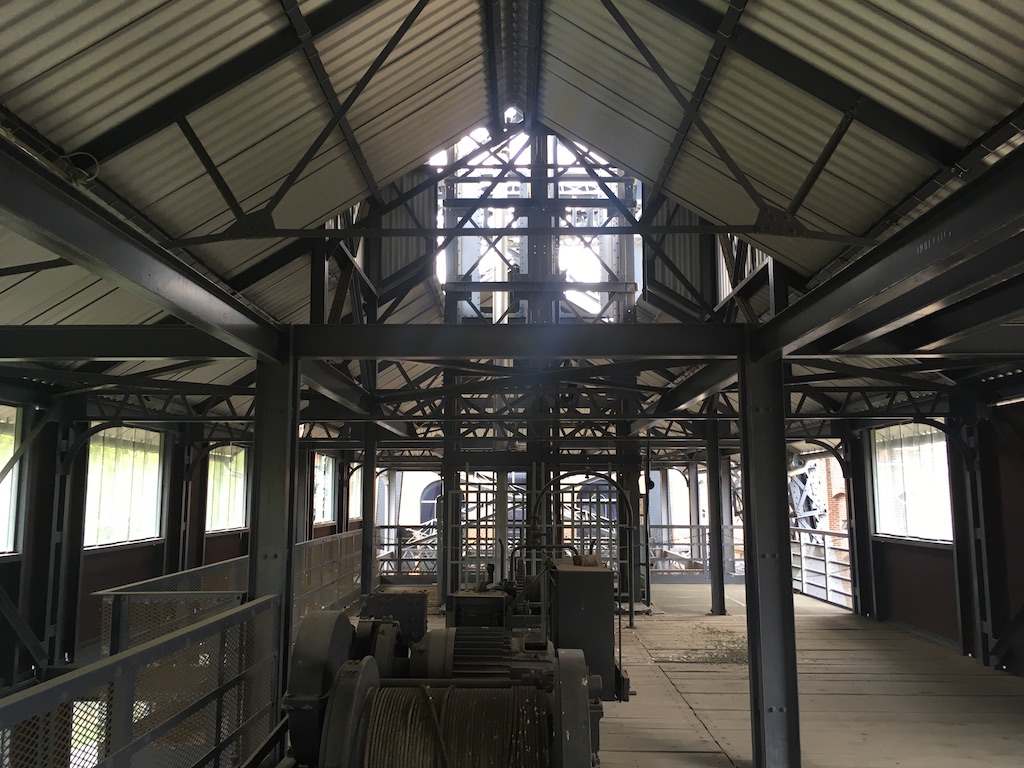
The Walloon mines, which had contributed to Belgium’s prosperity in the 19th century, began to decline after the Second World War. Then came the tragedy of the great mining accident of August 1956. The death toll from the accident was 262, and by the time the site was inscribed on the World Heritage List in 2012, there had been no other mining accident in Europe that exceeded this number.
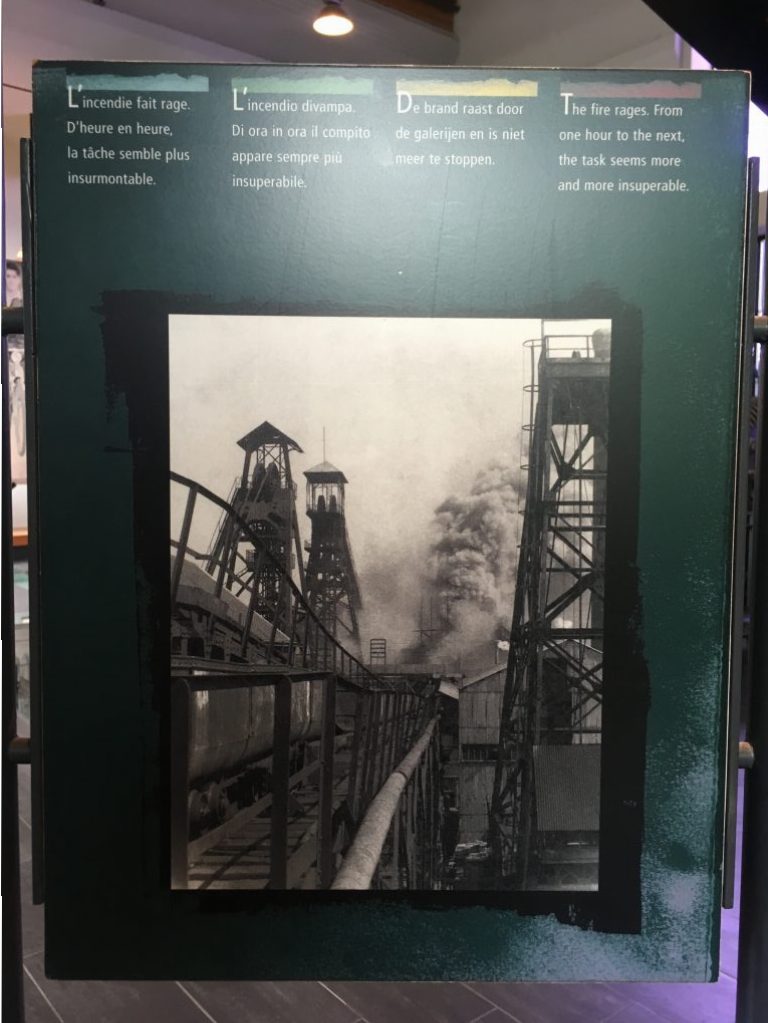
There is a piece of art in the cellar of pamphlet red circle 22, written to remember that accident.
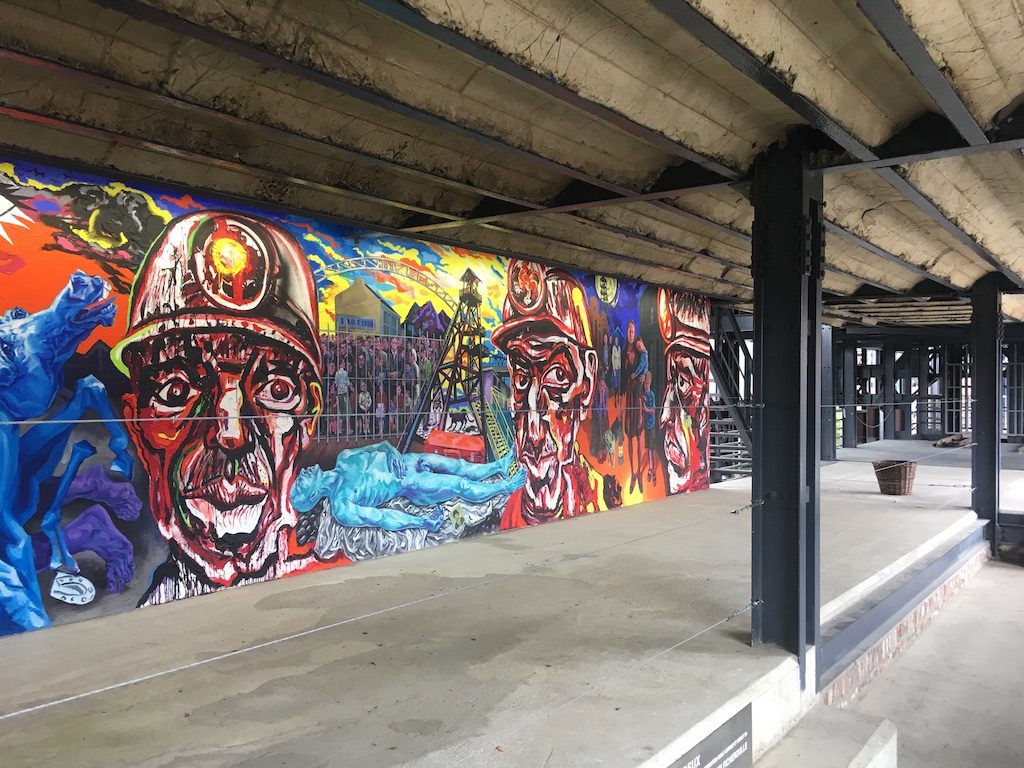
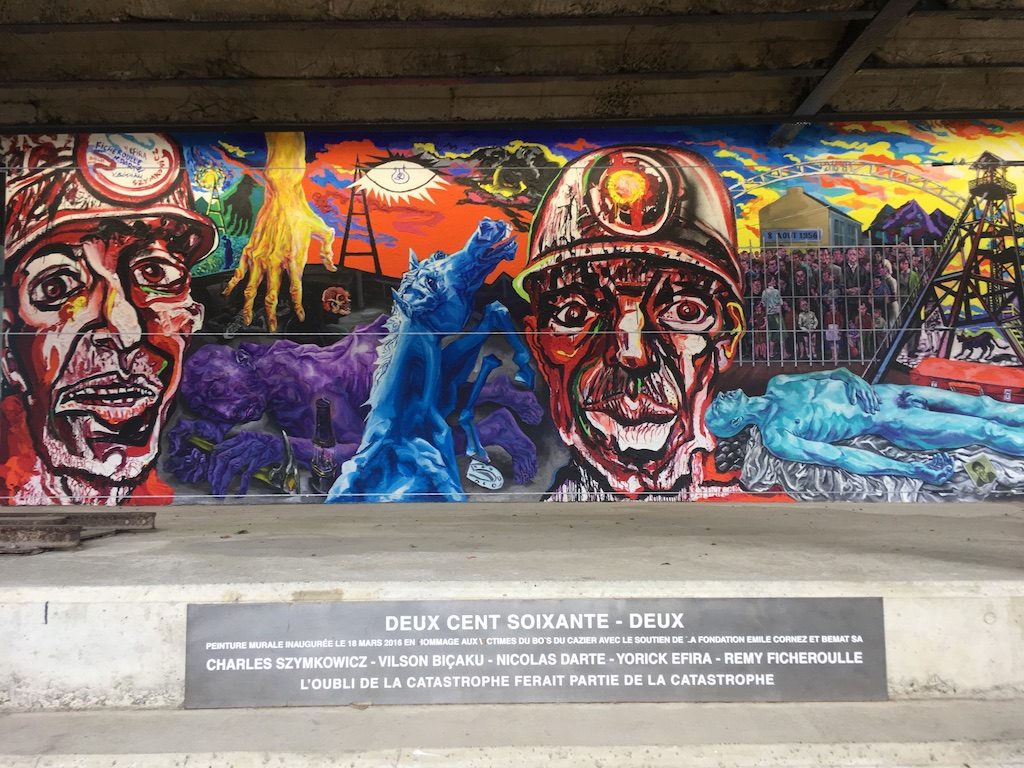
This work was painted by four graduates of the Royal School of Fine Arts in Brussels at the time.
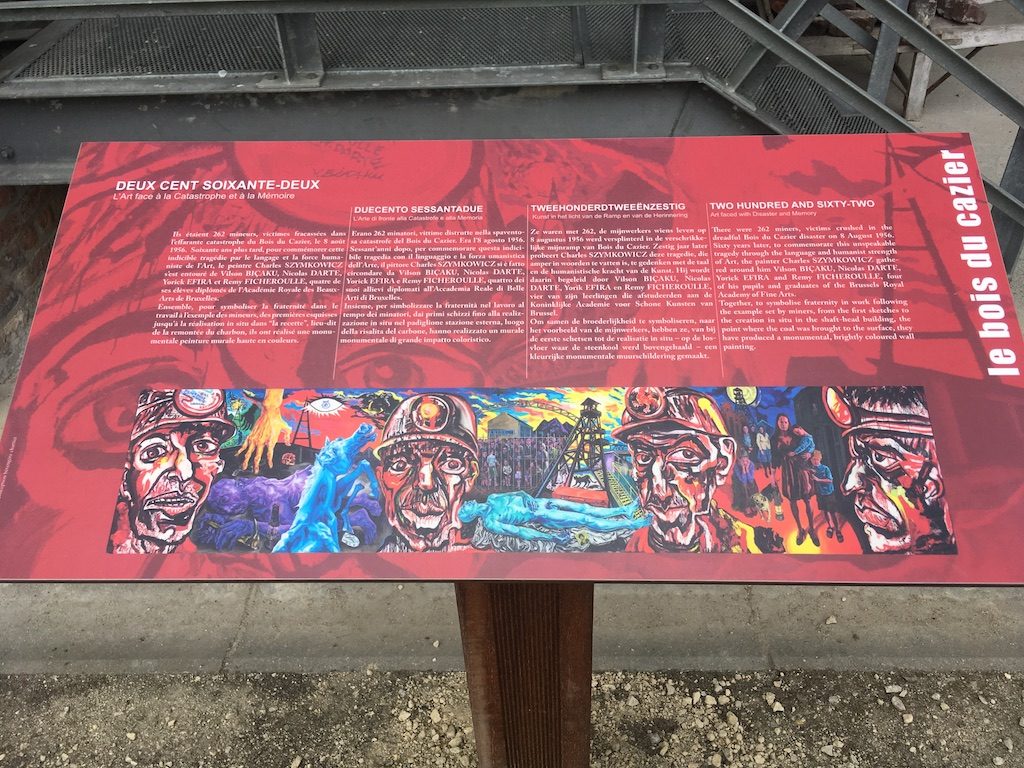
In fact, there was a memorial near the main gate of the site to commemorate those who lost their lives in the accident.
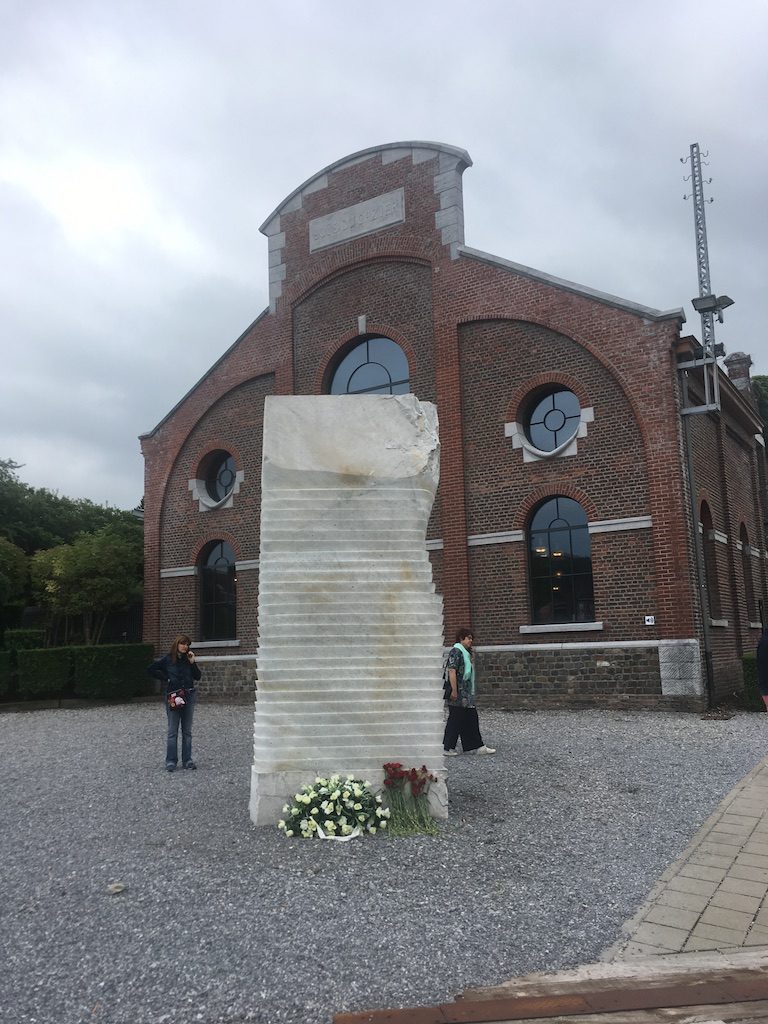
In addition, there were panels related to this catastrophe on display in buildings 22 to 28 (the purple buildings in the map). There was also an exhibition of photographs taken immediately after the accident. I could feel the tragic situation at that time.
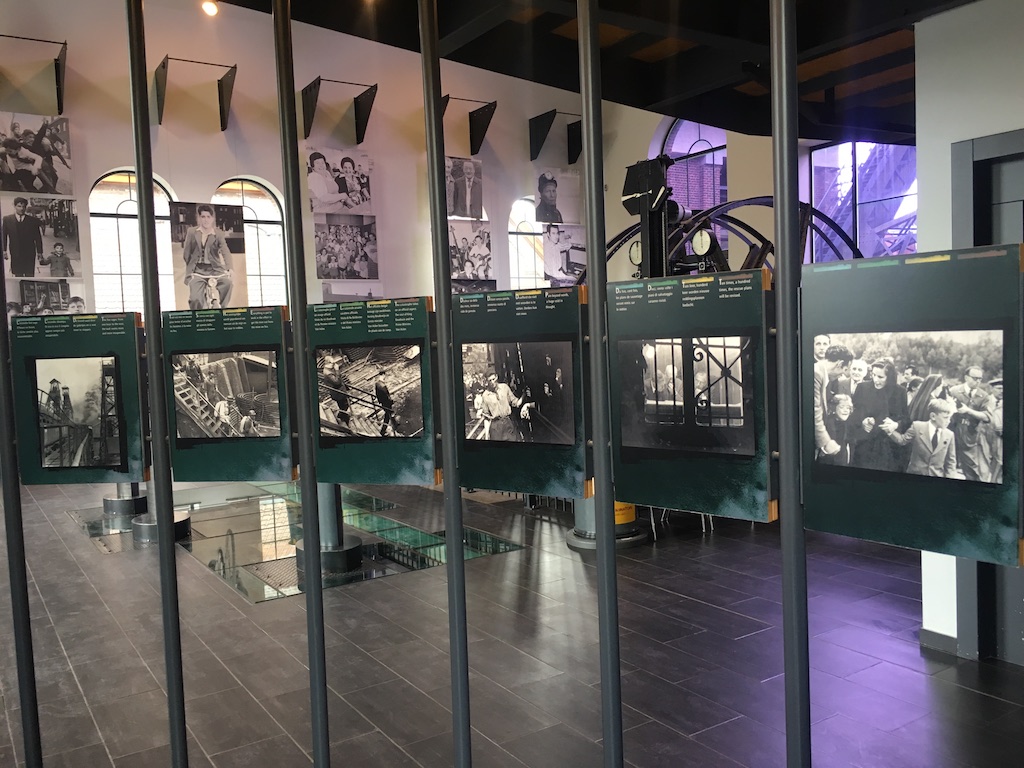
On the floor of the exhibition hall, there was a panel describing the situation during the 14 days from August 8, 1956, when the huge explosion occurred. It was a place where I could feel the strong attitude that this catastrophe must not be forgotten and must be passed on to future generations.

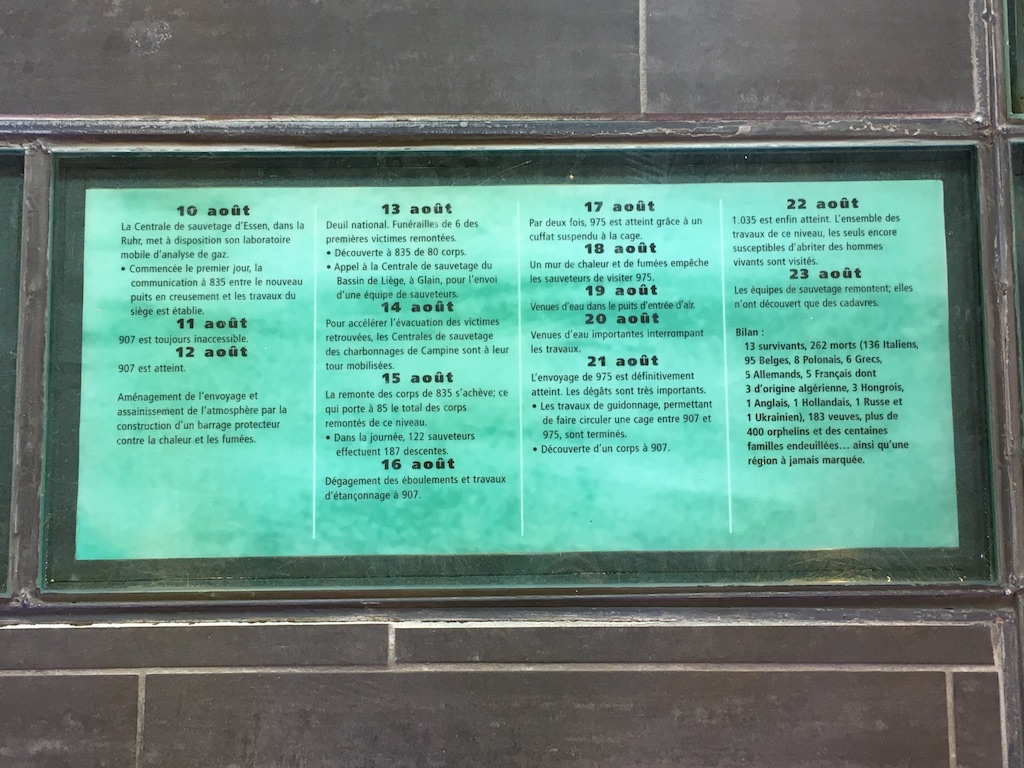
Inside the coal mine
In the building from No.22 to No.28, there was an exhibition that explained the state of the coal mine at the time of operation. This kind of exhibition is also found in Japan, for example, Iwami Ginzan Silver Mine, but it might be rare that it explains the situation at the time of operation with a solid photograph. However, it can be said that it is natural because the time is different from that of Iwami Ginzan.
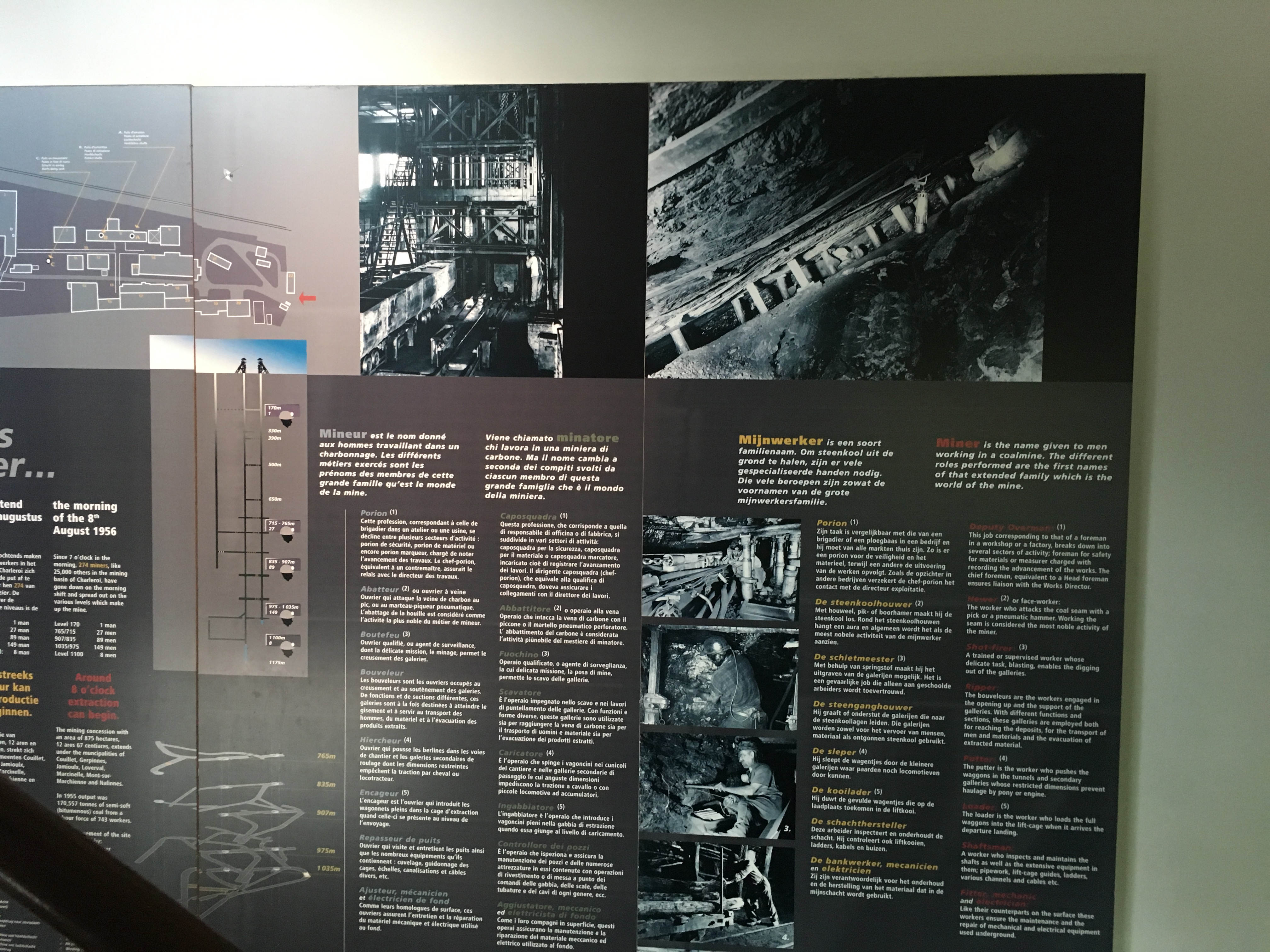
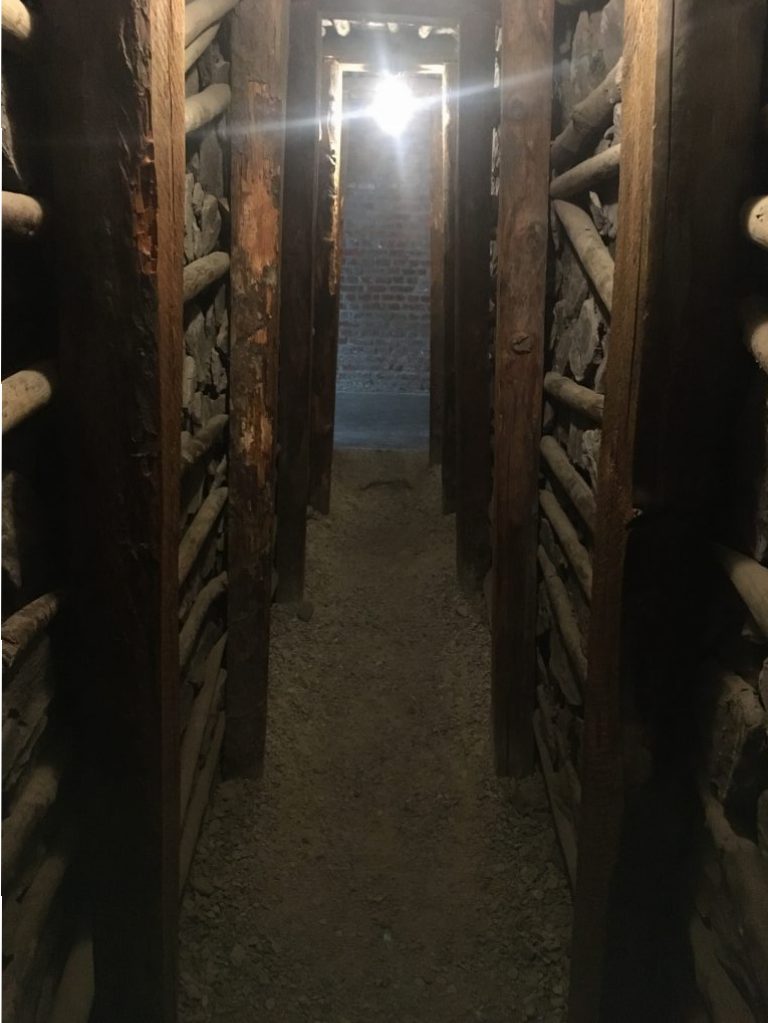
The Wall of Memories (le mémorial et le mur du souvenir)
At the end, we admired the « Wall of Memories » located near the entrance. However, this is just a place where photos of this facility at that time are displayed. Even so, since it was after we had finished viewing the entire museum and facility, we were able to enjoy the photos of things we saw during the process, which was unexpected.
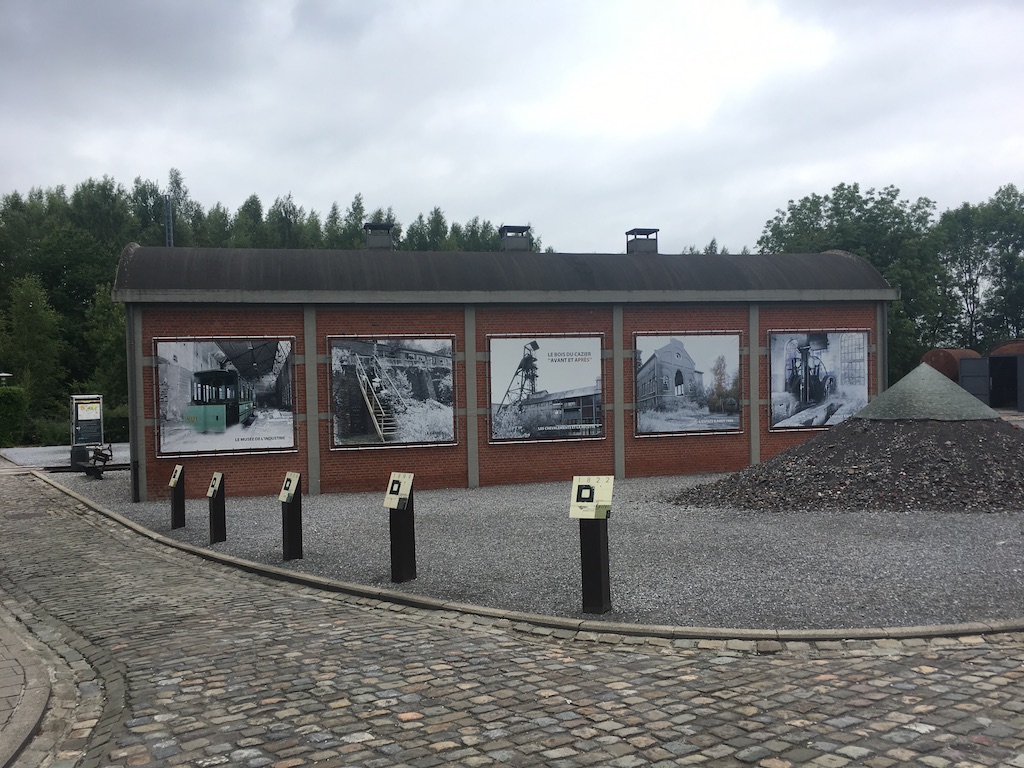
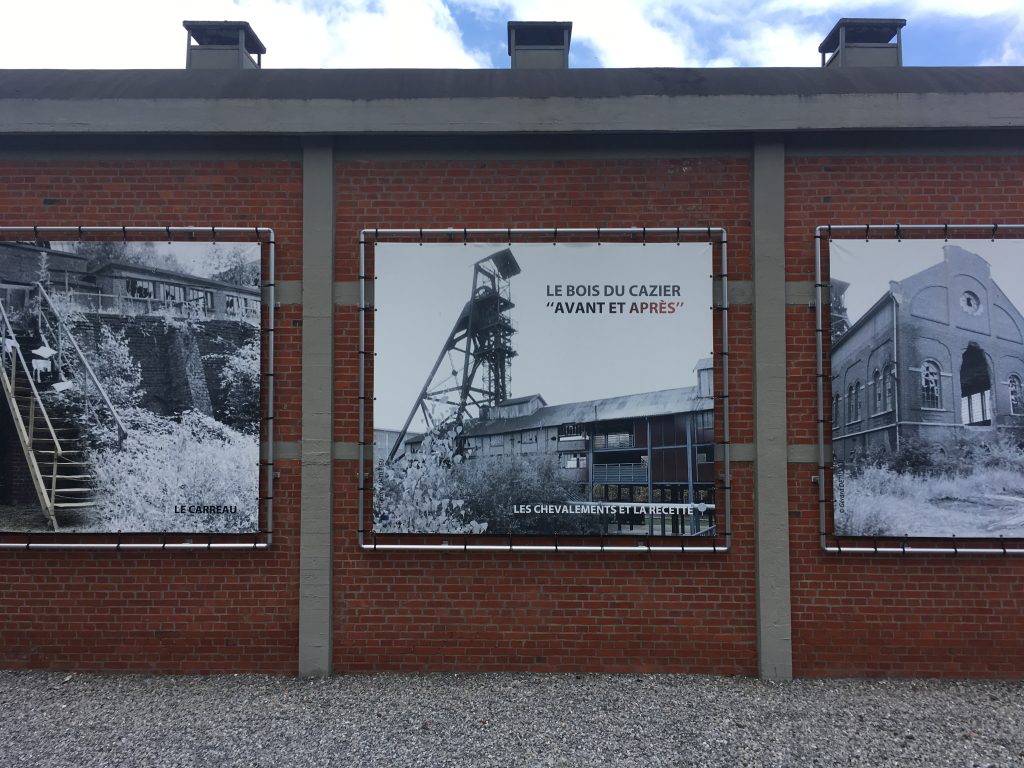
What I felt after the visit
When I visited the Bois du Cazier facilities and museum, I was strongly impressed by the high level of education in Belgium. For example, the explanations on the reply panels in the Museum of Industry were polite, easy to understand, and not at all small in volume, with straightforward but very detailed explanations. Although I am not fluent in French, I can read French to a certain extent, and I have some historical knowledge about the Industrial Revolution because I chose World History in high school, I could understand a lot from the French explanations at the museum because of the quality of the well-thought-out panel explanations. I thought it was because of the quality of the well thought-out panel explanations.
Generally speaking, explanations on panels in European museums are more detailed and polite than you can imagine in Japan. And they are long. Especially in France, it is very long. However, I visited some museums in Belgium during this trip, and I felt that they were well organized without excessive length compared to France and Germany.
